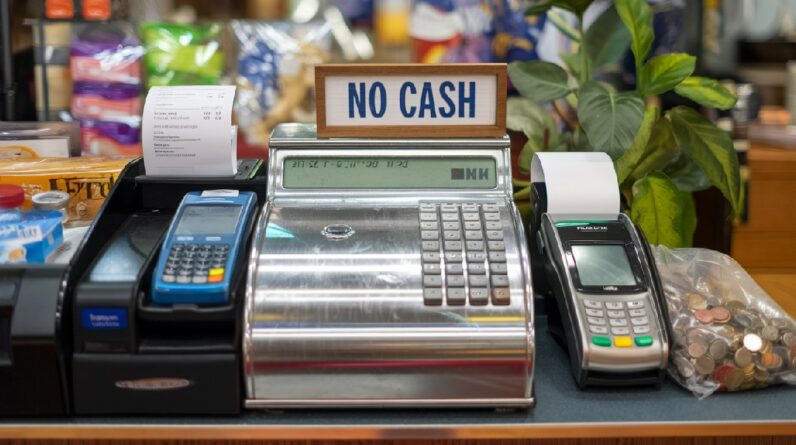The Australian Electoral Commission has hit back at suggestions it’s undermining the impartiality of the Voice referendum.
AEC Responds to Criticism on Voice Referendum Rules
The Australian Electoral Commission (AEC) has fired back at critics of the Indigenous voice referendum rules. In a statement, they dismissed claims of unfairness, asserting that the critics’ arguments were based on emotion rather than fact. The AEC stressed their commitment to electoral integrity and adherence to the law.
One controversial aspect of the rules is the use of ticks and crosses on the ballot paper, which some campaigners argue could undermine the process. As the debate rages on, calls for a review of the rule are growing.
Key Takeaways
- AEC issued a statement rejecting claims of unfairness and stating that critics’ claims were based on emotion rather than reality.
- AEC clarified the rule regarding ticks and crosses on the ballot paper, emphasizing that AEC staff can count votes that don’t strictly adhere to the instructions.
- Coalition figures, including Peter Dutton, raised concerns about the rule and suggested that the process is rigged without evidence.
- Critics called for the Electoral Commissioner to exert independence and review the rule to ensure a fair and accurate reflection of the nation’s will.
AEC’s Rejection of Claims on Unfairness in Referendum Process
The AEC issued a statement rejecting claims of unfairness in the referendum process. They stated that critics’ claims were based on emotion rather than the reality of the law. The statement emphasized that intense commentary online and in media had been factually incorrect.
Electoral integrity is a central part of the AEC’s values. They remain focused on adhering to all relevant laws and regulations. The AEC clarified that the ballot paper for the Indigenous voice referendum will have a square for ‘Yes’ or ‘No’. They also mentioned that less than 1% of votes in the 1999 republic referendum were informal votes.
The AEC has a longstanding history of regarding ticks and crosses. Their staff can count votes that don’t strictly adhere to the instructions under savings provisions.
Misconceptions Surrounding Ticks and Crosses on Ballot Paper
Opponents of the Indigenous voice referendum have raised concerns about the issue of ticks and crosses on the ballot paper. Some critics, including Peter Dutton, have suggested that the process is rigged without providing any evidence.
Coalition figures have also expressed concerns about the rule, arguing that allowing ticks but not crosses undermines the integrity of the voting process.
In response, the Electoral Commissioner, Tom Rogers, clarified that voters should write either ‘Yes’ or ‘No’ on the ballot paper. He emphasized the importance of following the instructions to avoid confusion among voters.
The Australian Electoral Commission (AEC) has a history of regarding ticks and crosses as valid votes under savings provisions. While some critics have called for a review of the rule, the AEC remains focused on adhering to all relevant laws and regulations to ensure a fair and accurate reflection of the nation’s will.
AEC’s Decades-Long History of Regarding Ticks and Crosses
Regarding ticks and crosses on the ballot paper, the AEC has consistently recognized them as valid votes for many years. This long-standing practice is based on the AEC’s understanding that voters may use ticks or crosses to indicate their choice on the ballot.
The AEC’s policy is supported by savings provisions, which allow AEC staff to count votes that do not strictly adhere to the instructions. These provisions ensure that the intent of the voter is respected and that their vote is included in the final count.
Despite recent criticism from some campaigners and politicians, including Peter Dutton and Simon Birmingham, the AEC remains firm in its stance that ticks and crosses are valid and that they contribute to the democratic process.
Criticism From No Campaigners, Including Peter Dutton
Peter Dutton, a prominent no campaigner, baselessly claimed that the process is rigged, casting doubt on the fairness of the referendum. Coalition figures, including Opposition Senate leader Simon Birmingham, raised concerns about the issue of ticks and crosses on the ballot paper. Birmingham argued that allowing ticks but not crosses undermines the integrity of the process and urged the government to review the rule to ensure fair vote counting.
Former treasurer and current Labor party president, Wayne Swan, dismissed the opposition’s claims as complete rubbish. However, critics accused the prime minister of orchestrating a rigged process and called for a review of the rule to ensure a fair and accurate reflection of the nation’s will.
Despite the criticism, the Electoral Commissioner, Tom Rogers, clarified that voters should write either ‘Yes’ or ‘No’ on the ballot paper, and well-established rules called savings provisions allow AEC staff to count votes that don’t strictly adhere to the instructions.
Opposition’s Concerns About Integrity of Vote Counting
Concerns have been raised by the opposition about the integrity of the vote counting process.
Opposition Senate leader, Simon Birmingham, has expressed his worry that the rule allowing ticks but not crosses on the ballot paper undermines the fairness of the process. Birmingham has urged the government to review this rule to ensure that the vote counting is conducted in a transparent and unbiased manner.
Former treasurer and current Labor party president, Wayne Swan, on the other hand, has dismissed the opposition’s claims as complete rubbish. However, critics argue that the prime minister’s alleged involvement in orchestrating a rigged process further adds to the concerns.
Some individuals have called for a thorough review of the rule to ensure that the final result accurately reflects the nation’s will.
Electoral Commissioner’s Clarification on Writing ‘Yes’ or ‘No
The Electoral Commissioner clarified that voters should write either ‘Yes’ or ‘No’ on the ballot paper, emphasizing the importance of following this instruction to avoid confusion.
Tom Rogers, the Electoral Commissioner, stated that well-established rules called savings provisions allow AEC staff to count votes that don’t strictly adhere to the instructions. While ‘Y’ or ‘N’ would likely be counted under the savings provisions, Rogers stressed the significance of writing either ‘Yes’ or ‘No’ on the ballot paper.
Mixed messages can create confusion among voters, so it is crucial for voters to clearly indicate their choice.
This clarification comes in response to calls for the commissioner to exert independence and review the rule, with critics accusing the prime minister of orchestrating a rigged process. Some have called for a review of the rule to ensure a fair and accurate reflection of the nation’s will.
Importance of Writing ‘Yes’ or ‘No’ on Ballot Paper
After the Electoral Commissioner, Tom Rogers, clarified that voters should write either ‘Yes’ or ‘No’ on the ballot paper for the Indigenous voice referendum, he emphasized the importance of following this instruction.
Rogers stated that well-established rules called savings provisions allow AEC staff to count votes that don’t strictly adhere to the instructions. He mentioned that writing ‘Y’ or ‘N’ would likely be counted under these provisions.
The commissioner highlighted the potential confusion that could arise if mixed messages were given to voters. Meanwhile, calls were made for the commissioner to exert independence and review the rule.
Peter Dutton, for instance, called on the commissioner to give a sensible interpretation, suggesting that the rule indicated a rigged process. Critics accused the prime minister of orchestrating a rigged process and urged for a review to ensure a fair and accurate reflection of the nation’s will.
Calls for Commissioner’s Independence in Reviewing the Rule
Calls have been made for the Electoral Commissioner to independently review the rule regarding the writing of ‘Yes’ or ‘No’ on the ballot paper for the Indigenous voice referendum.
Critics, including Peter Dutton, have accused the government of rigging the process by allowing ticks but not crosses. They argue that this undermines the integrity of the vote counting.
Opposition Senate leader, Simon Birmingham, has urged the government to review the rule to ensure a fair reflection of the nation’s will.
Former treasurer, Wayne Swan, dismissed these claims as complete rubbish.
In response, the Electoral Commissioner, Tom Rogers, clarified that voters should write either ‘Yes’ or ‘No’ on the ballot paper. He emphasized the importance of following this instruction to avoid confusion.
Despite the clarification, calls for an independent review of the rule persist to ensure a transparent and unbiased process.
Debate Over Rule to Ensure Fair and Accurate Reflection of Nation’s Will
Despite the ongoing debate surrounding the rule, critics argue that allowing ticks but not crosses on the ballot paper undermines the integrity of the vote counting process. They believe that this discrepancy creates an unfair bias and could potentially invalidate votes.
Opposition Senate leader, Simon Birmingham, has expressed concerns over the issue, emphasizing that the rule undermines the integrity of the process. He has urged the government to review the rule to ensure a fair and accurate reflection of the nation’s will.
Peter Dutton, a prominent figure among the no campaigners, has also voiced his criticism, suggesting that the rule shows the process is rigged without providing any evidence.
These calls for a review highlight the importance of maintaining transparency and fairness in the electoral system to uphold public trust in the democratic process.
Frequently Asked Questions
Why Did the AEC Issue a Statement Rejecting Claims of Unfairness in the Referendum Process?
The AEC issued a statement rejecting claims of unfairness in the referendum process. They stated that critics’ claims were based on emotion rather than the reality of the law.
What Percentage of Votes in the 1999 Republic Referendum Were Informal Votes?
Less than 1% of votes in the 1999 republic referendum were informal votes, with ticks and crosses forming a small portion. AEC staff can count votes that don’t strictly adhere to instructions under savings provisions.
How Does the AEC Count Votes That Don’t Strictly Adhere to the Instructions on the Ballot Paper?
The AEC counts votes that don’t strictly adhere to the instructions on the ballot paper by utilizing savings provisions. Under these rules, AEC staff can count votes that deviate from the instructions, such as using ticks or crosses instead of writing “Yes” or “No.”
What Did Peter Dutton Suggest About the Process?
Peter Dutton suggested that the process was rigged without evidence. He called on the commissioner to give a sensible interpretation. Critics accused the prime minister of orchestrating a rigged process and called for a review of the rule.
Why Do Critics Call for a Review of the Rule Regarding Ticks and Crosses on the Ballot Paper?
Critics call for a review of the rule regarding ticks and crosses on the ballot paper because they believe it undermines the integrity of the process and may lead to inaccurate vote counting.
Albion News is a great place to find informative, up-to-date news articles. We provide a wide range of unique articles that offer an interesting perspective on current events from around the world and from various different sources. You can easily search for the topics that matter most to you and explore in-depth pieces that provide insight into the issues and important debates occurring today. Albion News helps you stay informed with carefully researched and credible stories!







